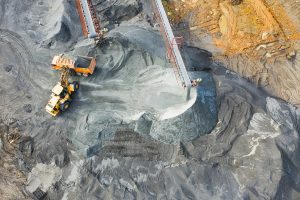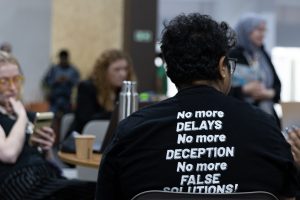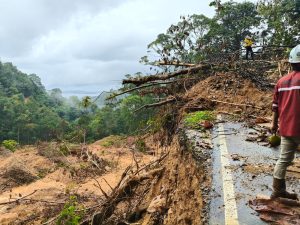Jakarta – World Agroforestry (ICRAF) revealed results of their research on the condition of the groundwater basin in the Rejoso Watershed in Pasuruan Regency, East Java, Thursday (25/8). The international agroforestry research institute found that water reserves will dry up in about 30 years, if water utilisation efficiency and water catchment conservation are not implemented immediately. Their research shows that in the 1980s, the Umbulan spring was still flowing at around 6,000 litres per second. However, the spring’s flow rate dropped drastically in 2018 to less than 4,000 litres per second.
The Rejoso watershed at the foot of Mount Bromo has a very strategic function as a provider of various types of natural resources services. Umbulan spring, located downstream of the Rejoso watershed is a source of clean water, not only for the people in Pasuruan Regency, but also in Pasuruan City, Gresik Regency, Sidoarjo Regency, and Surabaya City.
Currently, the ecological pressure on the Rejoso watershed is increasing. In the upstream areas, land cover changes, from forest to agriculture and settlements, accelerate the rate of erosion. In addition, there are many stone and sane mining activities. In the downstream area, water drilling for industrial purposes is increasing. In 2020 there will be around 600 drilled wells made by the community for domestic and agricultural purposes with a discharge of between 2-20 litres per second. Drilled wells are not equipped with regulating valves so that a lot of water is wasted.
If the groundwater basin in the Rejoso watershed dries out, it will be difficult for farmers who use water. Wells in houses of worship, schools, and households will also run dry. Clean water customers from Umbulan’s Drinking Water Supply System which reaches up to 1.6 million people will certainly also have difficulties.
As an effort to overcome this problem, in 2016 to 2018, Rejoso Kita, a multistakeholder movement to conserve the watershed area led by ICRAF, carried out a pilot program of payment for environmental services for the conservation of upstream and midstream of the Rejoso watershed.
A total of 174 farmers from 12 farmer groups managing 106.6 hectares of land in seven villages in Tosari and Pasrepan sub-districts received payments for environmental services (IDR 1.5-3.2 million/ha/year) for their conservation efforts, such as maintaining and maintaining 300-500 trees per hectare, create erosion-retaining grass strips and rorak (gutters between rows of plants dug out to trap and absorb water and sediments) to increase rainwater infiltration. PT Tirta Investama (Keboncandi Factory), a producer of bottled drinking water under the AQUA brand in Pasuruan acts as the buyer of environmental services.
A computer simulation conducted by ICRAF using the GenRiver – Generic Riverflow hydrological model illustrates that the payment scheme for environmental services carried out by maintaining the number of stands of 500 trees per hectare can increase infiltration by 0.5 – 1% and reduce surface runoff by 1.5 – 2 %.
To strengthen understanding and concern about the current condition of the Rejoso watershed and other watersheds in Pasuruan Regency and the urgency of carrying out conservation efforts, the Pasuruan Regency Watershed Management Coordination Forum or FDP held a workshop with the theme “Integrated Watershed Management in Pasuruan Regency through Joint Investment of Resources. Daya Air” in Jakarta on August 25, 2022, which was attended by the central government and representatives of companies operating in the Pasuruan Regency area.
Beria Leimona, Senior Expert on Landscape Governance and Investment, ICRAF Indonesia Program, said that payment schemes for environmental services such as those implemented in the upstream and midstream of the Rejoso watershed are basically co-investment schemes.
“In this scheme, there are parties who act as sellers of environmental services (for example, farmers who manage land and water conservation), then there are buyers of environmental services, namely parties who enjoy environmental services, such as the availability of clean water, and the last is intermediary parties, usually consortia or forums that are mutually agreed upon to manage programs such as identifying and verifying land, measuring achievement indicators, monitoring performance, as well as distributing compensation funds,” she said in the workshop.
The implementation of the payment scheme for environmental services for the purpose of watershed conservation, according to him, needs to be implemented with the principles of local wisdom. For example, in the selection of tree species planted by farmers themselves for consideration of benefits, so that they can foster a sense of belonging. In addition, the program assessment is not only carried out in terms of activity, but also from the output in the form of a reduction in erosion and an increase in water infiltration.
Heru Hendrayana, Senior Researcher from Gadjah Mada University, explained that the scientific and academic success of the implementation of the Rejoso watershed environmental service reward scheme has been measured and must be continued.
He said “to be able to continue, this needs to be included in government programs that will ensure sustainability.”
Explaining that the latest data on Umbulan Spring’s flow rate has even decreased to around 2900 litres per second, Hendrayana emphasised that the conditions are very critical and require real action, stop water leaks, and make efforts to fill it with conservation. (Hartatik)
Farmers using groundwater in the downstream of the Rejoso watershed in Pasuruan Regency, East Java Province, Indonesia, participate in the Rejoso Kita program led by ICRAF and discuss the construction of efficient drilled wells. (Source: Rejoso Kita Youtube channel)















